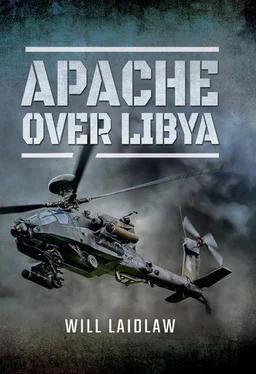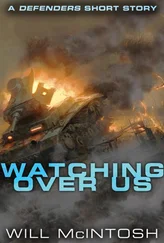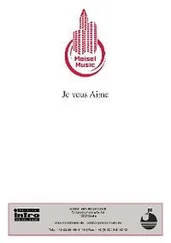Wires were my biggest concern. The Apache has wire cutters positioned around the fuselage, but those huge high-tension electricity wires will still cause a lot of damage, like a 100mph baseball bat striking the windscreen. This would more than likely result in the aircraft going down in a very untidy way and two rather ruffled soldiers tabbing their way to a rendezvous for an HH60 ‘Jolly’ pick-up. I never got an answer to my ‘what would we do if we had to leave an aircraft on the ground in Libya?’ question. Would someone come along and ‘deny’ it? Or would we leave it for Gaddafi to play with on telly? Either way, someone senior would be embarrassed, and I was sure they would let me know all about it. Bumping into wires had all sorts of pain associated with it.
Using the two video images gave us the best chance to see them, but it is a difficult brain- and eye-straining skill. Our risk here was about flying low enough to survive an unscheduled fight while also being able to see obstacles in time to quickly climb, cross and then descend again. We train for this at home and conduct sortie after sortie of low-level flying at night to give us the skills necessary to do it in combat. It is a fine balance, back in Suffolk, to keep aircrew operationally fit in all their flying skills while not upsetting the communities we live in. Occasionally we get complaints, very occasionally someone will try and blind us with a high-powered torch or a hand-held laser. However annoying the noise of a helicopter passing low-level at night may be, flying thus is an essential skill, and this particular evening four Apache pilots were using every ounce of that critical training to keep them alive behind enemy lines over Gaddafi-controlled Libya.
‘Wires! 400m, 12 o’clock. Go to 200ft.’
John: ‘Got them, climbing…’
‘Not on the map, those ones. Continue at 200ft.’
John: ‘Wilco.’
We continued over undulating terrain between 100 and 200ft, the gun moving with my head, eyes searching near, middle and far, left to right, FLIR flicking from white hot to black hot to change the view and break out the threat, be it man with MANPAD or just lethal wires.
‘Map says wires in 700m.’
John: ‘Not visual yet.’
‘Hold 120ft, looking…’ Then, ‘Got them, left eye, 300m. Climb!’ I had found them on NVG first.
John: ‘Climbing…’
‘Hold 200ft, wires in 500m, now good on black hot FLIR right eye.’ Now FLIR was helping, I mentally merged the NVG and infrared images.
John: ‘Visual, all good… quite a late one, that.’
Doing over 100 knots we crossed the wires, held our height, crossed another set not on the map, banked right into the desert, descended and began setting up for the target. Charlie and Mark kept formation, searching for their own threats and matching us for height and speed. For the most part all was going according to plan. So far it had been an average night out over Libya.
With five miles to go we went into our pre-planned attack profile. Our target was a collection of storage buildings used by 32 Brigade to house soldiers and equipment. The aerial reconnaissance reports showed they were very active, and it looked a good Apache target set. We were authorized to hit specific buildings while leaving others untouched – typical of the discriminatory method of modern targeting. This is important from both a legal perspective and a moral one – we were interested in unseating 32 Brigade, not adding to the woes of the civilian population they were threatening. A neat Hellfire strike would do the job and contain the damage.
Our long transit was almost complete. We picked up the distinctive dried meander of the wadi that would lead us to the target and I flicked from gun to missiles, defence to offence. Now we were on the attack. I switched to the Bowman radio to coordinate the attack; this way it was possible for Ocean to listen in if she was close enough.
‘Running in, targets identified, no changes, continue,’ I transmitted.
The patrol split. John kept us heading straight for the target area, while Charlie and Mark flew momentarily east and then banked hard back toward the targets. We had now set up a coordinated strike, in which each aircraft attacked the target set, near simultaneously, from a different heading. This allowed us to get two different views of the same target, very useful when making sure no civilians were in the area, and also offered fewer places for the enemy to hide.
Mark fired first. I was counting down to my own shot when I saw one of my targets demolished by the familiar force of a Hellfire, followed by the destruction of another.
‘You’re taking my targets?!’ It was half question, half incredulous observation.
‘Yes, sorry, tumbleweed, better now…’, he replied. In Mark Hall country that’s as good as an apology gets. With no time to discuss manners I accepted, and we agreed who had what from the remaining targets and pressed on with the attack. Together we fired ten Hellfire in just four minutes – buildings destroyed, no movement within the wreckage. Outside, Gaddafi’s soldiers were rushing about in the vicinity of other buildings. Maximum effect, much chaos and the sound of the Apache rushing overhead.
We left the scurrying, panicked soldiers – they needed to tell their seniors and their friends that the Apache had been and done this, much as their colleagues had been doing for the last seven weeks up and down the country. None of them had a go at us. With such a weight of fire coming in on them in a small area, usually two or three Hellfire at a time, only one or two seconds separating each impact, it must have seemed like the world was ending. Cognitive effect builds its own momentum.
On the way out Mark put another Hellfire into the VCP guarding the site. That was our final target for the night. I gave a quick burst on the radio, in part to tell Ocean we were on our way, in part to collect the team and head for home.
‘All targets destroyed, one hundred, one hundred, head three-five-zero.’
Gun actioned, scanning for trouble, we made the mad low-level dash north up the wadi to the coast and then the search for Mother. No one stirred, not a shot came our way. Silence and the Apache was all that followed the roar of ten Hellfire that night. The plan had worked, audacious as it was. Crafty minds had kept us ahead of Khamis. That and ten Hellfire in four minutes.
* * *
There were three more missions like that during a single week in late July, all to locations being used by 32 Brigade to run their operations. Some of the targets were buildings, others no more than large sheds or storage containers. Two of the missions were coordinated strikes with Royal Air Force Typhoon and Tornado aircraft. These missions were put together by the CAOC with precise detail, down to what sort of weapon would be used for each target, what the attack heading would be and the order in which the targets were to be hit. In normal Apache operations we prefer more freedom to decide our way of working; but it was their air war for the most part, their big fast planes sitting up there five miles above us, and such a prescriptive method removed a lot of risk.
The idea was simple: disrupt 32 Brigade, create chaos, do it repeatedly and make a lot of noise with 500lb Paveway IV from the fast jets and the much smaller Hellfire from the Apache. And once the dust settles, all that is heard, if anyone can still hear, are rotor-blades as the Apaches tip in for another attack. Keep building that momentum, keep getting in their heads: you can’t stop us and we will keep on fighting you until you stop threatening the civilian population. You have no place to hide.
The fourth mission that week destroyed an ammunition and weapons storage facility just behind the front line. The targets, ten in total, were all within a walled compound just off the beach. We could stay feet-wet for this one, a straightforward run, shoot, watch the fast air weapons, say what we saw and get back to Ocean . Total simplicity, with all the coordination done in the CAOC and just the final details completed between me and the jet mission lead on the telephone that afternoon. I felt rather good about my gunnery as I controlled three Hellfire in the air at once, their discrete explosions delivering the precise effect I wanted. Then I called clear and watched the awesome sight of a Paveway IV obliterate the adjacent buildings. Big and clever, I thought – but I won’t tell them that! One target remained. I glanced at the map and the reconnaissance photo. It was a storage container, a huge air-conditioned metal box the size of a bus, allocated to Nick and Little Shippers.
Читать дальше












